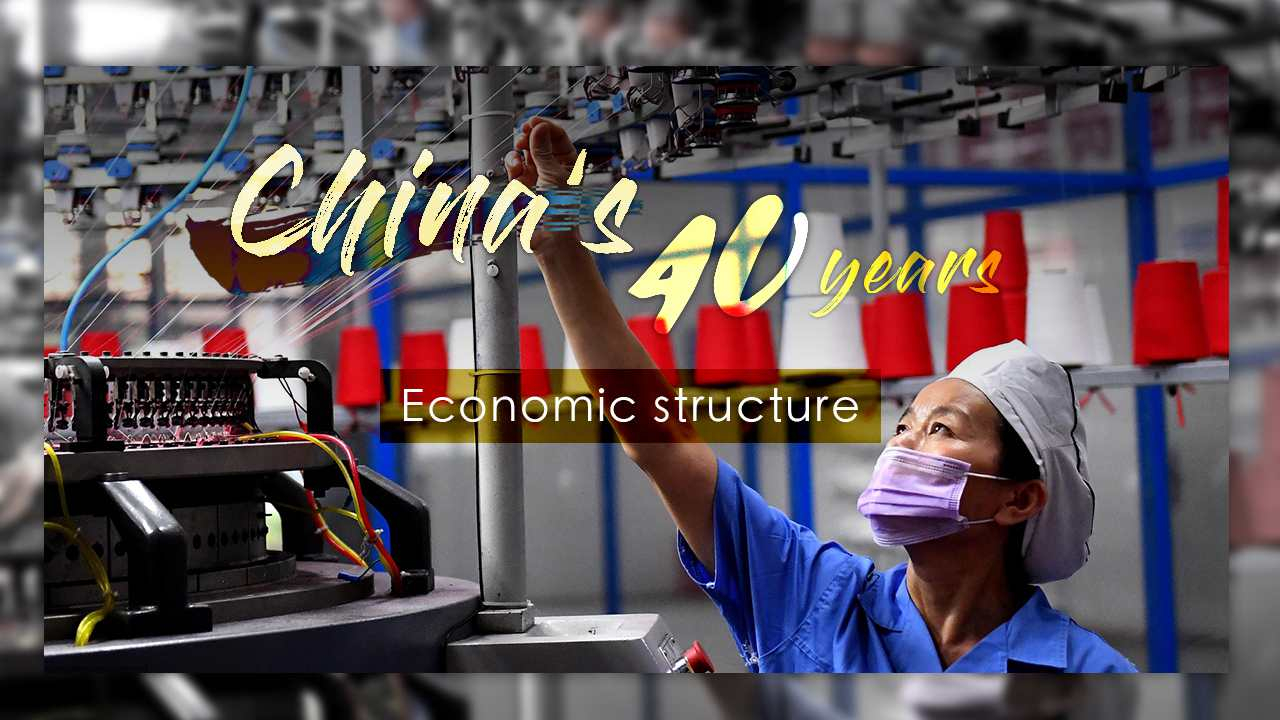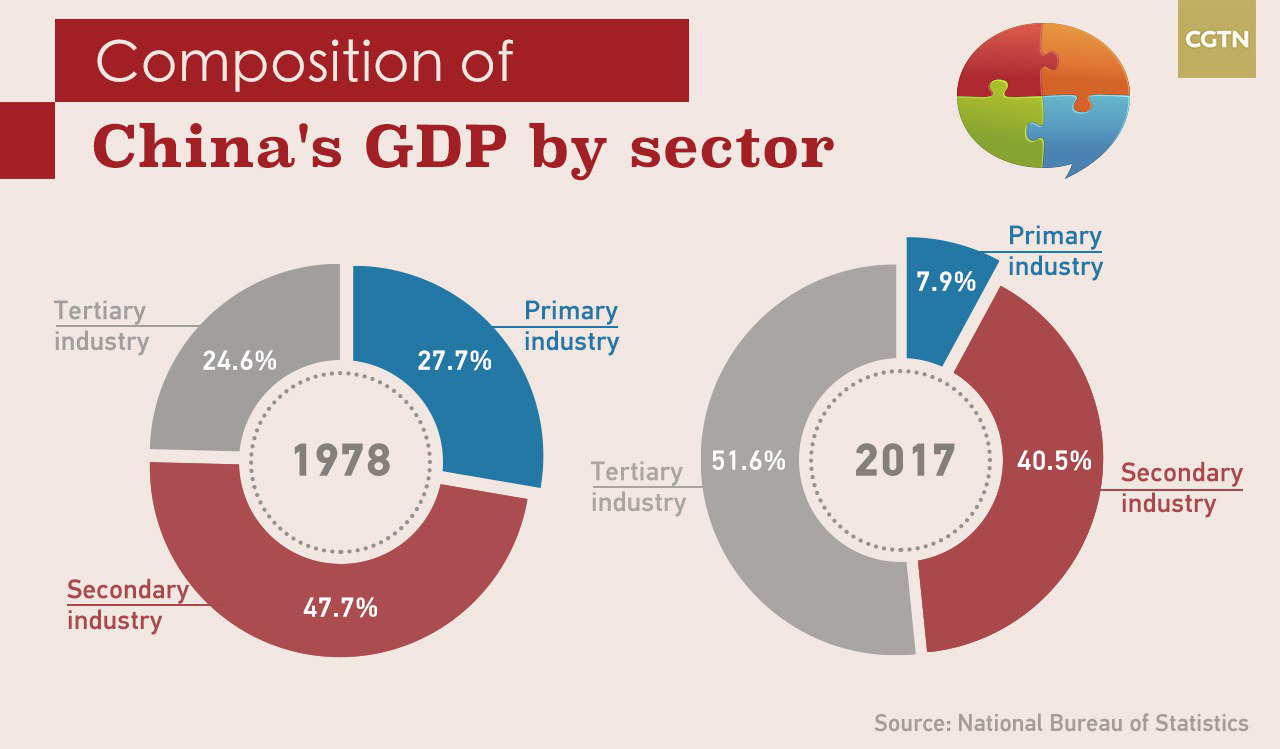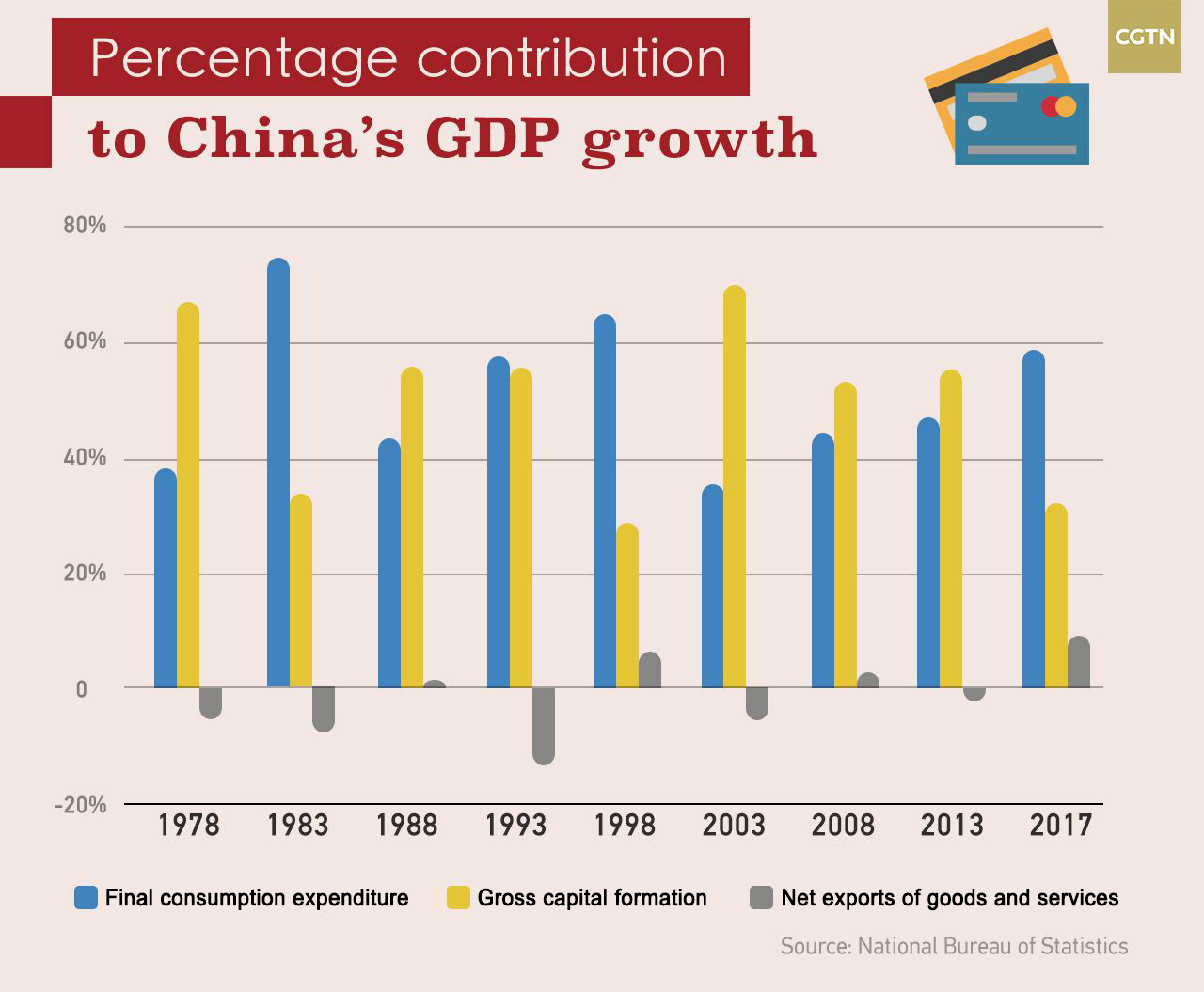Historic changes in China's economic structure in past 40 years
Since the implementation of the reform and opening-up policy in 1978, China's economic structures have become more coordinated in the past 40 years.
Since the implementation of the reform and opening-up policy in 1978, China's economic structures have become more coordinated in the past 40 years.

China's economic growth is now driven by three sectors rather than the secondary industry alone.
The contribution of the primary industry in China's GDP decreased from 27.7 percent in 1978 to 7.9 percent in 2017 while the tertiary industry accounted for 51.6 percent in 2017, a 27-percent increase from 1978.

The structure of industries has been significantly optimized, since agriculture, the foundation of China's economy, has been more consolidated. The industry has developed to reach middle- and high-end levels with service sector becoming a major part of the national economy.
China has made efforts to transform its economy from being export-led to domestic consumption-driven in the past four decades. Initially, the contributions of consumption, investment, and exports to China's GDP growth remained unstable, which was not good for a steady and smooth economic growth.

The reform and opening-up policy focused on boosting domestic demand. In 2017, the final consumption expenditure contributed 58.8 percent to GDP growth as compared to 38.3 percent in 1978.
The proportion of gross capital formation fell to 32.1 percent in 2017 from 67 percent 40 years ago.
While net exports of goods and services, the value of a country's total exports minus the value of its total imports, accounted for 9.1 percent in 2017.
In addition, three strategies were announced at the beginning of the 21st century to ensure that the fruits of development are shared with people across China, including large-scale development of the western region, all-around revitalization of northeast China and other old industrial bases as well as the rise of the central region.
Then, the reform and opening-up policy went a step further with the introduction of the Belt and Road Initiative (BRI), along with the economic development belt along the Yangtze River and coordinated development for the Beijing-Tianjin-Hebei region, which indicated that China is willing to share its development results with the world.

China's urbanization rate surged to 58.52 percent in 2017 as compared to 17.92 percent in 1978.
As of 2017, there were around 810 million permanent urban residents in China, up by 640 million since 1978, an annual average growth of 16.44 million.
The number of Chinese cities more than tripled to 661 in the last 40 years.
Now, the cities in China are aiming to achieve infrastructure integration and public service equalization.
As per figures until October 2018, China has 71.37 million self-employed households and 30.67 million private companies as compared to 140,000 self-employed households in 1978 and 90,500 registered private companies in 1989.
A total of 115 private Chinese companies made it to the list of Fortune Global 500 in 2017.
Today, the private sector plays an important role in China's economy. It contributes to more than half of the country's tax revenues and accounts for 60 percent of the national GDP, 70 percent of technological innovation and new products, 80 percent of urban employment and 90 percent of employment generation.

